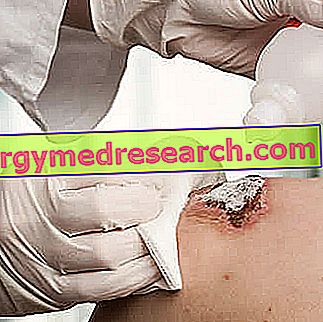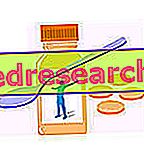Definition and generalities
Antiseptics are particular substances belonging to the great category of anti-infective agents, which also include disinfectants and antimicrobial drugs for systemic use.

As is easily imaginable, antiseptics are used to prevent and counteract the onset of infections (caused by viruses, bacteria, fungi, etc.), sepsis or putrefaction of various origins and nature.
The ideal antiseptic should act only on the pathogenic microorganism, without causing effects of any kind on humans or treated animals; therefore, it should be most effective against the potential pathogen with little or no toxicity for the body.
Classification
Antiseptics are classifiable in different ways: according to their mechanism of action; according to their chemical structure and according to the type of use for which they are intended (for example, antiseptics to be used on intact skin, on damaged skin or on mucous membranes).
In addition to what has just been said, antiseptics can be divided into two broad categories: antiseptics that kill microorganisms (such as, for example, bactericides ) and those that stop or slow down growth and development (such as, for example, bacteriostatics ).
However, the most widely used classification method is, most likely, the one that provides for the division of antiseptics according to their chemical structure. Among the main antiseptics still used today we can therefore distinguish:
- Alcohols, among which we find ethyl alcohol and isopropyl alcohol . They are normally used at a concentration of 60-70% for the disinfection of intact skin. They are able to significantly reduce the microbial load on the skin and for this reason they can also be used for surgical hygiene, both alone and in association with other antiseptics.
- Biguanides, among which chlorhexidine stands out. This molecule is widely used in the disinfection of intact skin and is particularly effective against Gram-positive bacteria (bactericidal action). However, by increasing their concentration, an increase in the action spectrum can be achieved which also extends to Gram-negative bacteria and fungi.
It can also be used in the surgical field and generally has a rather limited toxicity. However, it must not come into contact with injured skin, as it must not be absorbed, just as it is necessary to avoid contact with the eyes and the middle ear.
- Halogenated compounds, among which we find triclosan, iodopovidone and iodine tincture .
Triclosan is a chlorinated phenol used for the disinfection of intact skin, which is also part of the composition of some personal hygiene products. It has a rather broad spectrum of action, but more limited than that of other antiseptics, such as, for example, iodopovidone. However, triclosan appears to be particularly effective in countering methicillin-resistant Staphylococcus aureus strains.
Even compounds containing iodine - such as iodopovidone and iodine tincture - are used in the disinfection of intact skin and have a broad spectrum of action. Normally, they are well tolerated (except in case of hypersensitivity) and possess relatively low toxicity.
- Peroxides, such as hydrogen peroxide (or hydrogen peroxide ).
Hydrogen peroxide is used as an antiseptic on damaged skin and is therefore effective in the treatment of wounds, excoriations and ulcers. Normally, it is used at the concentration of 10-12 volumes; if in higher concentrations, it must be previously diluted.
It should be emphasized that - although well tolerated - the use of hydrogen peroxide on injured skin can cause slight pain. Finally, it should be remembered that this compound should not be used in conjunction with other antiseptics containing iodine and / or iodides.
- Boric acid . This compound is usually used in concentrations of 3%, as an antiseptic in the disinfection of irritated or chapped skin areas and in the disinfection of minor burns. In addition to this, boric acid is also used as an antiseptic in the treatment of acne. Usually, it is a well-tolerated compound, so much so that it can also be used in children, provided they are older than three years.
Action Mechanism
The mechanisms of action through which antiseptics perform their activity can be manifold.
In most cases, antiseptics act on the cell membrane and on the proteins of the microorganisms sensitive to them.
More specifically, among the main mechanisms of action of antiseptics, we find:
- Alteration of the structure of the cell membranes of microorganisms (as happens, for example, with the use of chlorhexidine);
- Alteration of the permeability of cell membranes of microorganisms;
- Denaturation of the proteins contained within the microorganism (as happens when ethyl alcohol or hydrogen peroxide are used);
- Oxidation of microorganism proteins (as occurs when iodine-containing antiseptics are used).



